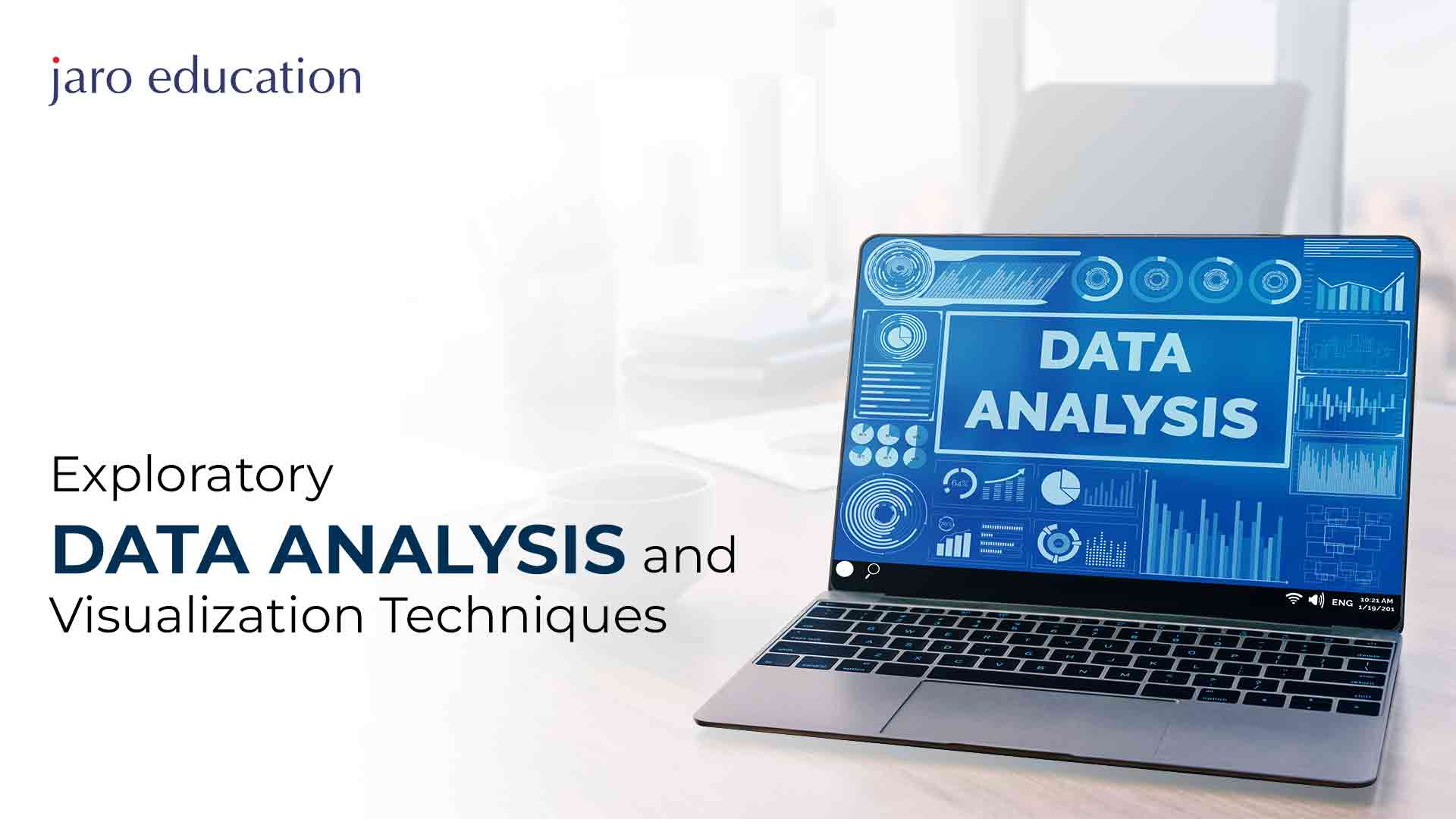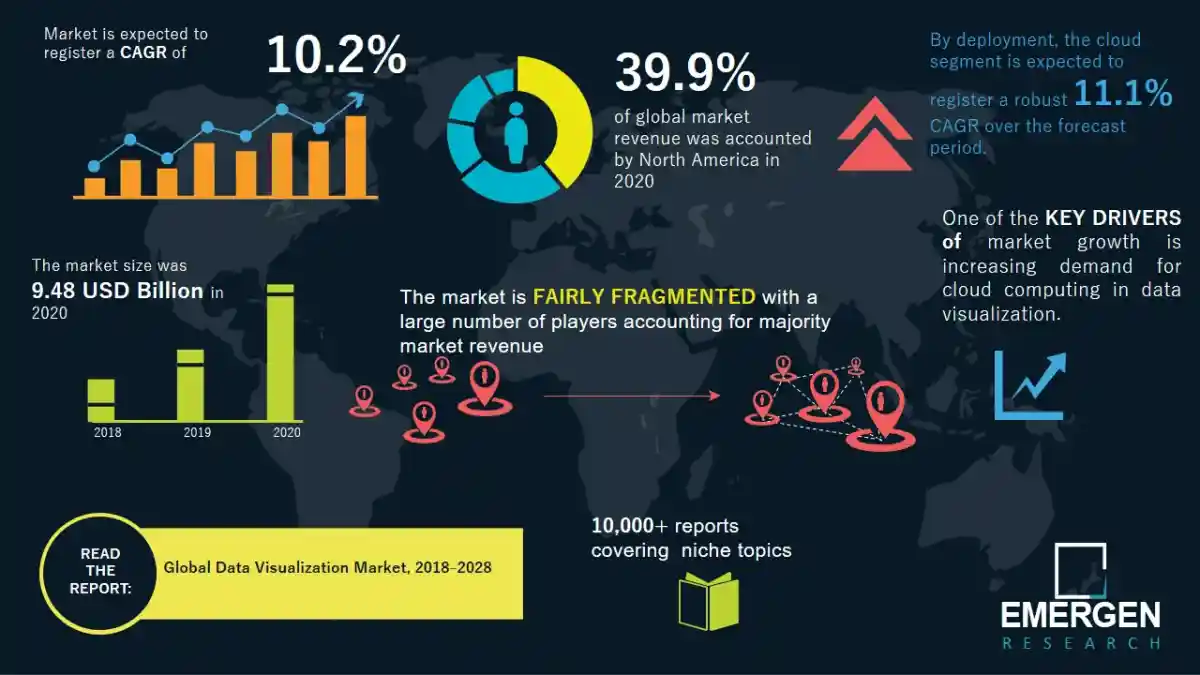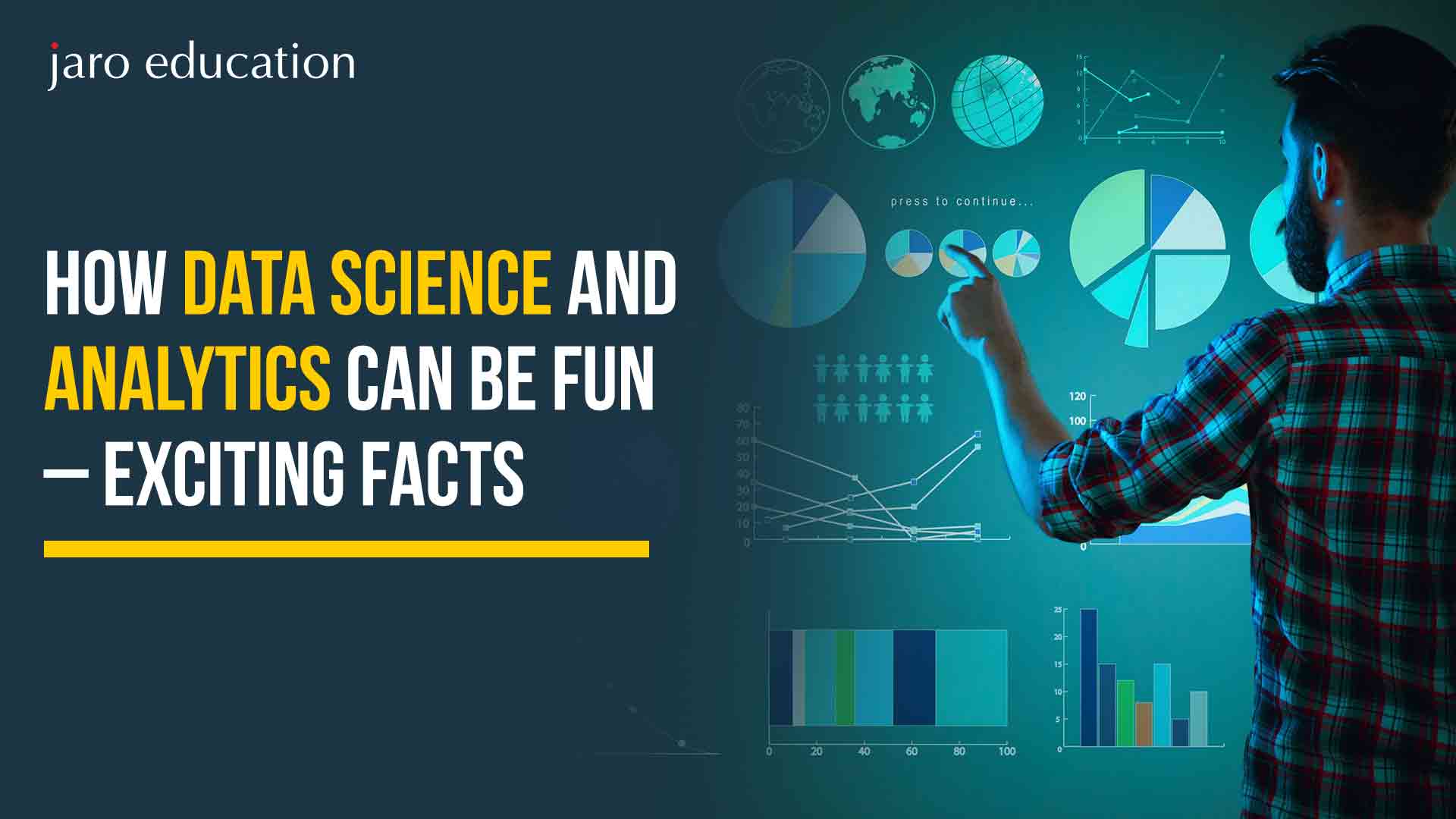Exploratory Data Analysis and Visualization Techniques
Table of Contents

- jaro education
- 29, August 2023
- 4:00 pm
Exploratory data analysis (EDA) and visualisation techniques are vital components of the data science toolkit. Organisations and individuals alike are inundated with vast amounts of data, and the need for these two components keeps surging. To extract meaningful insights from the vast piles of information, it is essential to have the ability to explore and understand the data. EDA allows us to understand data patterns, relationships, and trends. On the other hand, visualisation techniques help us present the findings in a clear and concise manner.
To amplify your skills in Exploratory Data Analysis and visualisation techniques and remain abreast in the competitive field, being a part of a leading professional course like the one provided by IIM Kozhikode can keep you ahead in your career. The Professional Certificate Programme in Advanced Analytics & Business Intelligence offers a vast array of lessons for a period of 1 year. From inspecting real-life case studies to witnessing a rigorous pedagogy, you will reach your milestone soon with this programme.
Understanding Exploratory Data Analysis
EDA in data analysis is an approach that focuses on understanding and summarising the main characteristics of a dataset. It involves using various statistical and visualisation techniques to explore the data, identify patterns, and uncover relationships. It significantly detects anomalies and outliers. EDA aims to gain insights into the data, generate hypotheses, and inform subsequent data modelling or decision-making processes. It primarily involves examining data distributions and summary statistics, besides visualising data through charts, graphs, and plots and conducting basic statistical tests. EDA is an essential step in the data analysis workflow as it helps data scientists and analysts gain a comprehensive understanding of the dataset’s structure, identify data quality issues, and guide further analysis or modelling tasks.
Why is Exploratory Data Analysis Essential?
The raw data obtained is not perfect at first hand. It frequently portrays imperfections, missing values, and outliers. If these imperfections are not addressed at the right time, it can lead to performance degradation during building models. Some data professionals tend to skip EDA to reach the machine learning stage. They either completely bypass EDA or conduct it without seriousness. However, such ignorance comes with significant implications. It can result in the generation of inaccurate models and accurate models built on incorrect data. Plus, it can also lead to a failure to create the necessary variables during data preparation and inefficient resource utilisation.
EDA is a major step in the data analysis process. It enables people to rectify these data issues effectively. One can enhance the accuracy, reliability, and efficiency of subsequent analyses through EDA.
Defining Data Visualisation
Data visualisation techniques involve the statistical tools used to represent data visually through charts, graphs, plots, maps, and other visual elements. These techniques aim to present complex data in a simplified and understandable format, allowing patterns, trends, and relationships to be identified at a glance. Data visualisation is a powerful means to communicate insights, support data-driven decision-making, and facilitate the exploration and analysis of data.
Commonly Used Data Visualisation Techniques
Many visualisation techniques are being scrutinised for various utilities in different sectors. Some of them are described in this segment.
Bar Charts and Column Charts
These visualisations use rectangular bars or columns to represent categorical or numerical data, making comparisons and distributions easy to understand.
Line Charts
Line charts display data points connected by lines, often used to depict trends over time or continuous variables.
Area Chart
These are similar to line charts but with the area below the line filled, emphasising the cumulative value or proportion of data over time or categories.
Pie Charts
For dividing data into slices, pie charts are extensively used. It represents the proportions or percentages of a whole.
Scatter Plots
Such plots represent the relationship between two variables, with each data point plotted as a dot on a Cartesian coordinate system, revealing patterns or correlations.
Histograms
Histograms display the distribution of numerical data by grouping it into bins or intervals and representing the frequency or count of data points within each bin.
Heatmaps
Heatmaps use colour gradients to represent values in a matrix or table, allowing patterns and variations to be easily detected.
Box Plots
These plots provide a visual summary of the distribution of numerical data, displaying the median, quartiles, and outliers.
These techniques, along with others, serve as valuable tools for data exploration, analysis, and communication. It allows data practitioners to derive insights, discover patterns, and convey information effectively.

Visualisation Techniques Used for Exploratory Data Analysis
For the purpose of exploratory data analysis, several visualisation tools and techniques are in use. Here are the tools predominantly used for the same.
Univariate Plots
Univariate plots are visualisations that focus on a single variable at a time. These plots provide insights into the distribution, central tendency, variability, and other characteristics of a single variable.
Histograms
This statistical technique involves two-dimensional plots where the x-axis can be divided into time intervals or numerical bin ranges. Other the other hand, the y-axis portrays the frequency values. These values indicate the counts of occurrence for each bin. Unlike bar graphs, there is an absence of gaps between bars because they represent continuous data. A left or positively skewed distribution indicates that most of the data falls on the right side. A right or negatively skewed distribution suggests that most of the data falls on the left side. Bi-modal histograms display two distinct peaks, indicating the presence of two different groups or patterns. On the other hand, a normal distribution is perfectly symmetrical and lacks skewness. A uniform distribution indicates that almost all the bins have similar frequencies, implying a relatively even distribution of values.
Probability Distribution Plots
Probability distributions are essential mathematical functions that describe the range of possible values a random variable can take. They are integral in modelling and comprehending random phenomena, enabling us to estimate the probabilities associated with specific events. By analysing probability distributions, the likelihood of various outcomes and the range of potential values that can be expected are understood.
Run Sequence Plots
Also known as the run chart, a run sequence plot is a graphical representation that displays observed data in a chronological manner. These plots are used to understand the output of a business process in a given period of time. They are a variation of line charts and serve as a valuable tool for identifying patterns, anomalies, and trends in the data.
Bivariate Plots
In this kind of plot, two variables and their relationships are deduced. Below are the bivalent plots usually used for EDA.
Bar Graphs
This is the most commonly used plot that compares ordinate or nominal data. They are optimally utilised for understanding various trends in various industries.
Heat Maps or Correlation Plots
By plotting data points and calculating correlation coefficients, heat maps provide insights into the strength and direction of associations. It helps businesses identify potential dependencies that can inform decision-making and strategy development.
Density Plots
It is a continuous and smooth version of a commonly used histogram evaluated from data. There are several such plots, and one of them is the kernel density plot.
Plots for Special Purposes
Pair Plots
This plot involves creating scatter plots and histograms from each variable combination from multiple variables. By doing so, it provides a comprehensive view of a dataset.
Contour Plots
To represent a 3D surface in a 2D format, the contour plot is a great visualisation technique. It usually requires continuous variables instead of categorical data.
Radar or Spider Char
It is a graphical tool used in business analytics to compare multiple variables across different categories or groups. With each variable represented by a spoke or axis, the radar chart displays data as a series of connected lines. It enables visual comparisons and identifying strengths and weaknesses across various dimensions or attributes.
Lag Plot
This plot is used in time series analysis to detect dependencies in sequential data. It involves plotting a variable against its lagged values, generally with a lag of one time period.
Lognormal Plots
It is a graphical tool used to assess the distributional characteristics of data that follows a lognormal distribution. It compares the quantiles of the data against the quantiles of a theoretical lognormal distribution. A lognormal plot helps identify if the data exhibits a lognormal distribution or diverges from it.
Auto-Correlation Plots
An autocorrelation plot, also known as a correlogram, is a graphical representation used to analyze the autocorrelation of time series data. It shows the correlation coefficients between a time series and its lagged values.
Takeaway
Exploratory Data Analysis (EDA) and Visualisation Techniques are indispensable components of modern data analysis and decision-making processes. EDA allows us to delve deep into the intricacies of data, uncovering patterns, relationships, and insights that drive meaningful discoveries. It aids in understanding data structure, identifying data quality issues, and generating hypotheses for further analysis. Visualization techniques provide a visual language to communicate complex information effectively, enabling stakeholders to grasp data-driven insights at a glance.
To learn everything about EDA and visualisation techniques and apply them professionally, join the Professional Certificate Programme in Advanced Analytics & Business Intelligence by IIM Kozhikode through Jaro Education. This professional course will demonstrate every aspect through technology-aided instruction. From hands-on live interactive classes to in-campus immersion, you can gain valuable skills and knowledge through a versatile mode of education.










